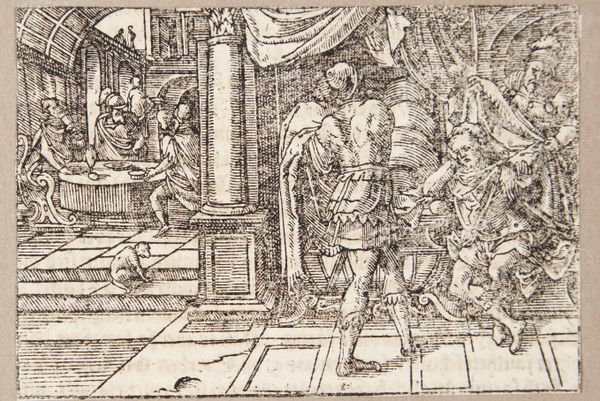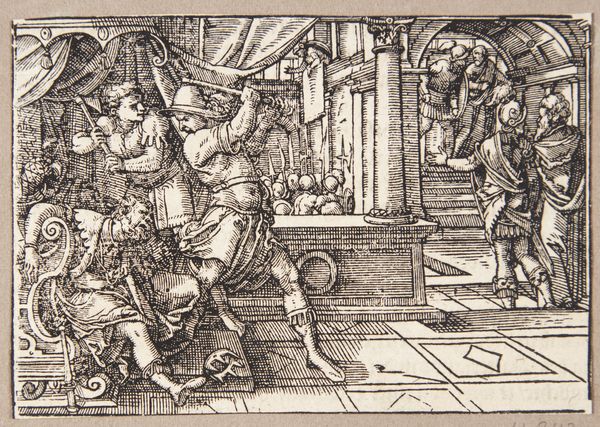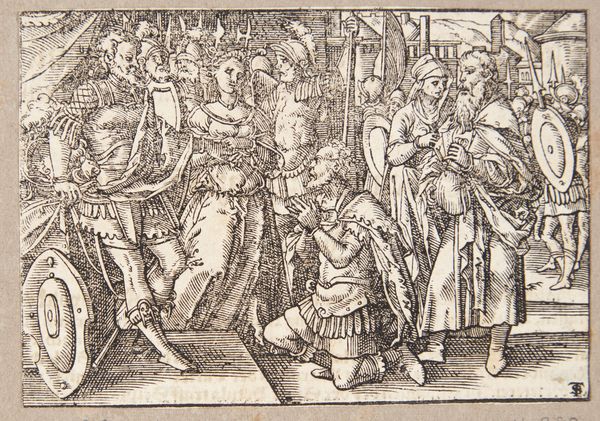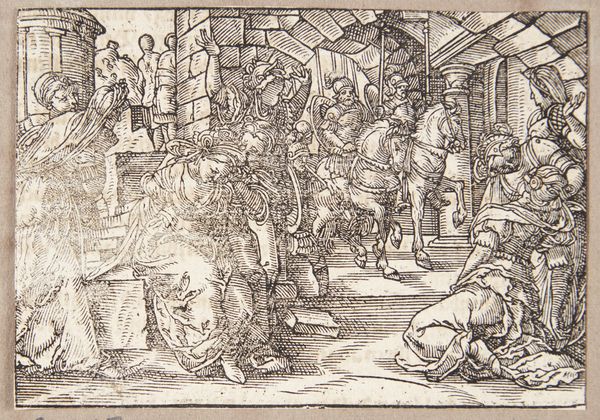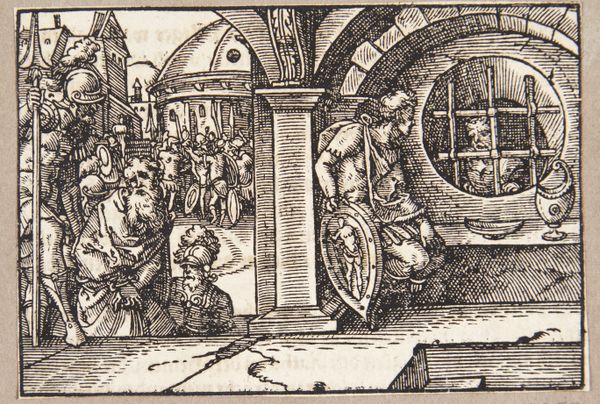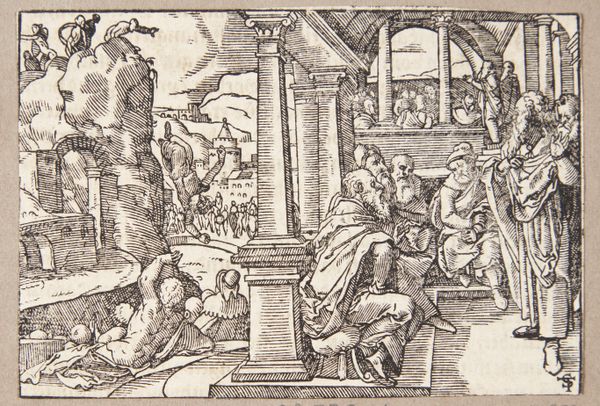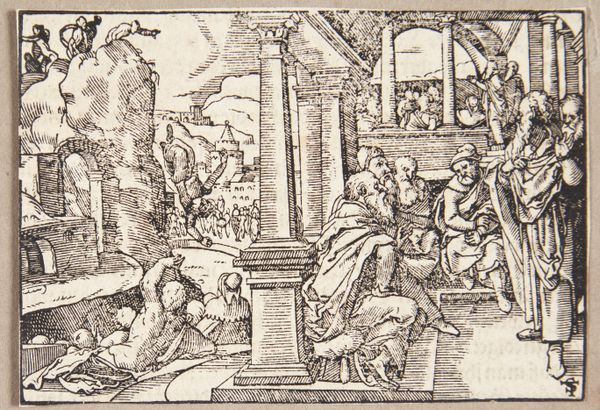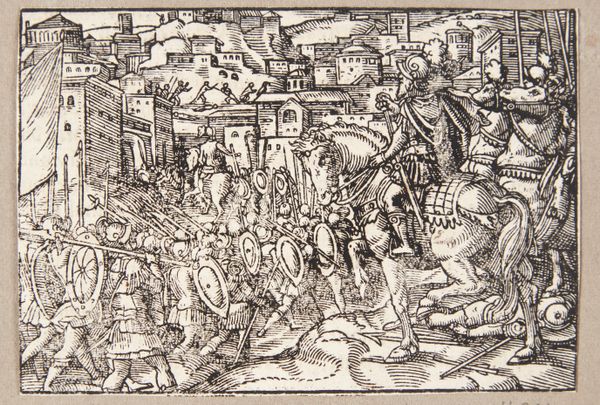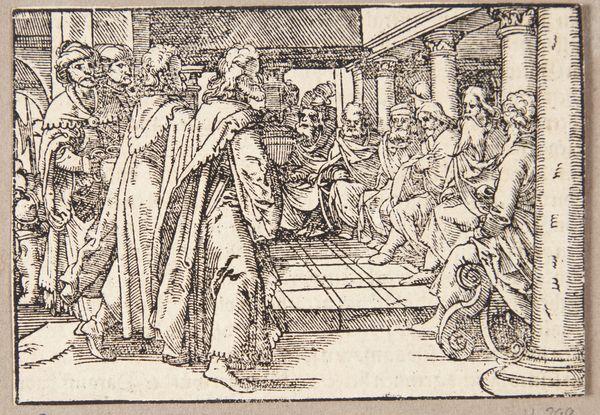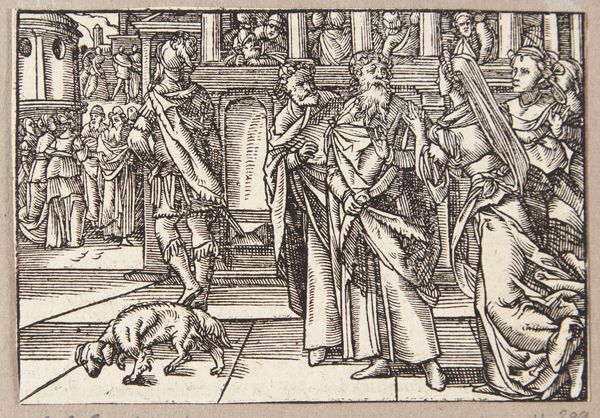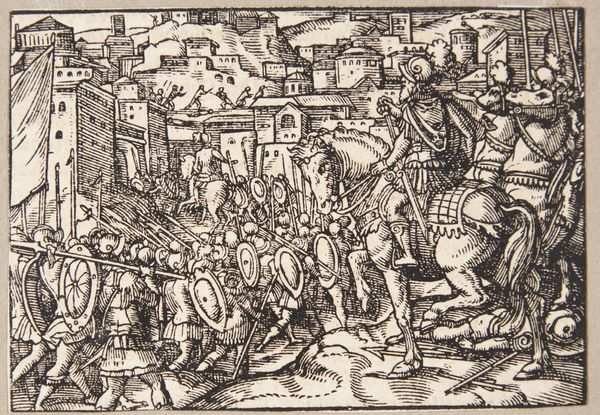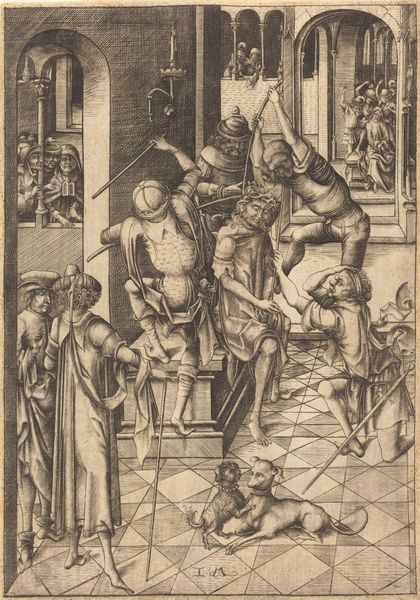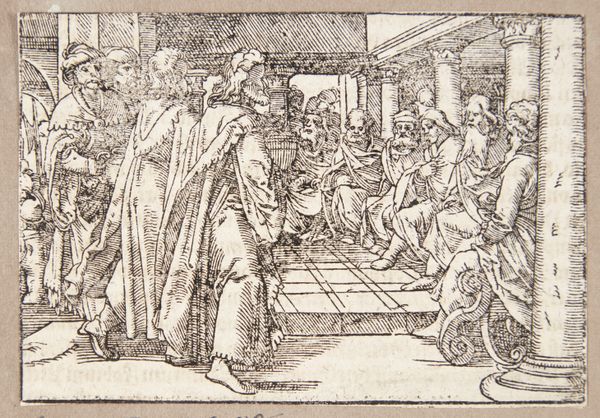
print, woodcut
# print
#
woodcut
#
history-painting
#
northern-renaissance
Dimensions: 75 mm (height) x 105 mm (width) (bladmaal)
Editor: This woodcut, “Numa Pompilius Dividing the Year into Twelve Months” by Tobias Stimmer, created in 1574, shows quite a dramatic scene! It has a stark, almost unsettling quality. What symbols are at play here? Curator: Yes, the dramatic intensity comes through in Stimmer's use of light and shadow. Let's look at some recurring motifs. The figure of Numa, of course, embodies order and civilization, visibly contrasting with the primitive past. Note the inclusion of what appears to be astronomical charts, signifying the Roman’s move towards a measured and regulated idea of time. What do these symbols of measurement evoke for you? Editor: They definitely speak to humanity's attempt to impose order onto something vast and uncontrollable. Like a calendar versus the cosmos. Curator: Precisely. Consider how Numa’s actions connect to foundational myths. He is taming and channeling natural forces, moving them away from earlier notions of what time can mean, and the impact those shifting cultural narratives would have on those that came after. There’s always tension between established narratives and cultural memory. Editor: So the visual language becomes a record of changing cultural beliefs. It makes you think about what symbols we’re creating today that future generations will try to understand! Curator: Exactly! Symbols build on each other, influencing cultural memory, reinforcing narratives and changing meanings. This little woodcut reflects major shifts in how we experience time itself! Editor: I never thought about a calendar being a cultural symbol. It really shifts your perspective. Curator: Mine as well! It is rewarding when works from the past illuminate our understanding of the present.
Comments
No comments
Be the first to comment and join the conversation on the ultimate creative platform.
